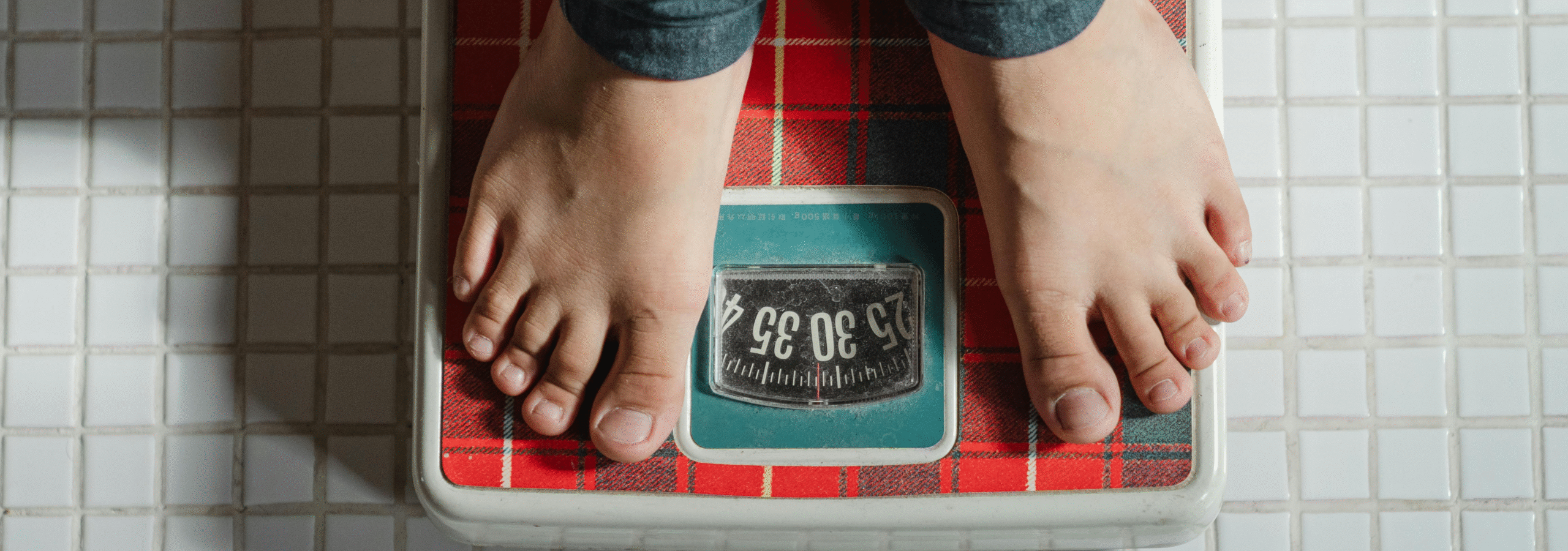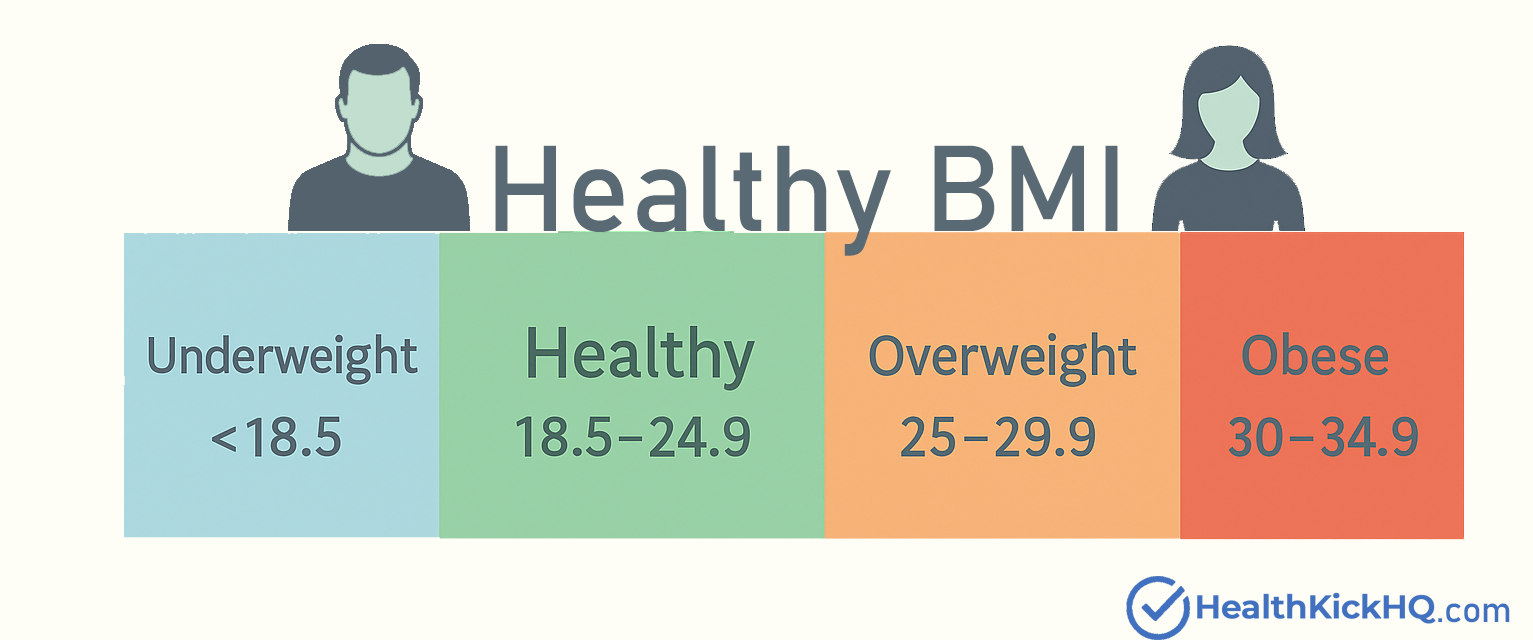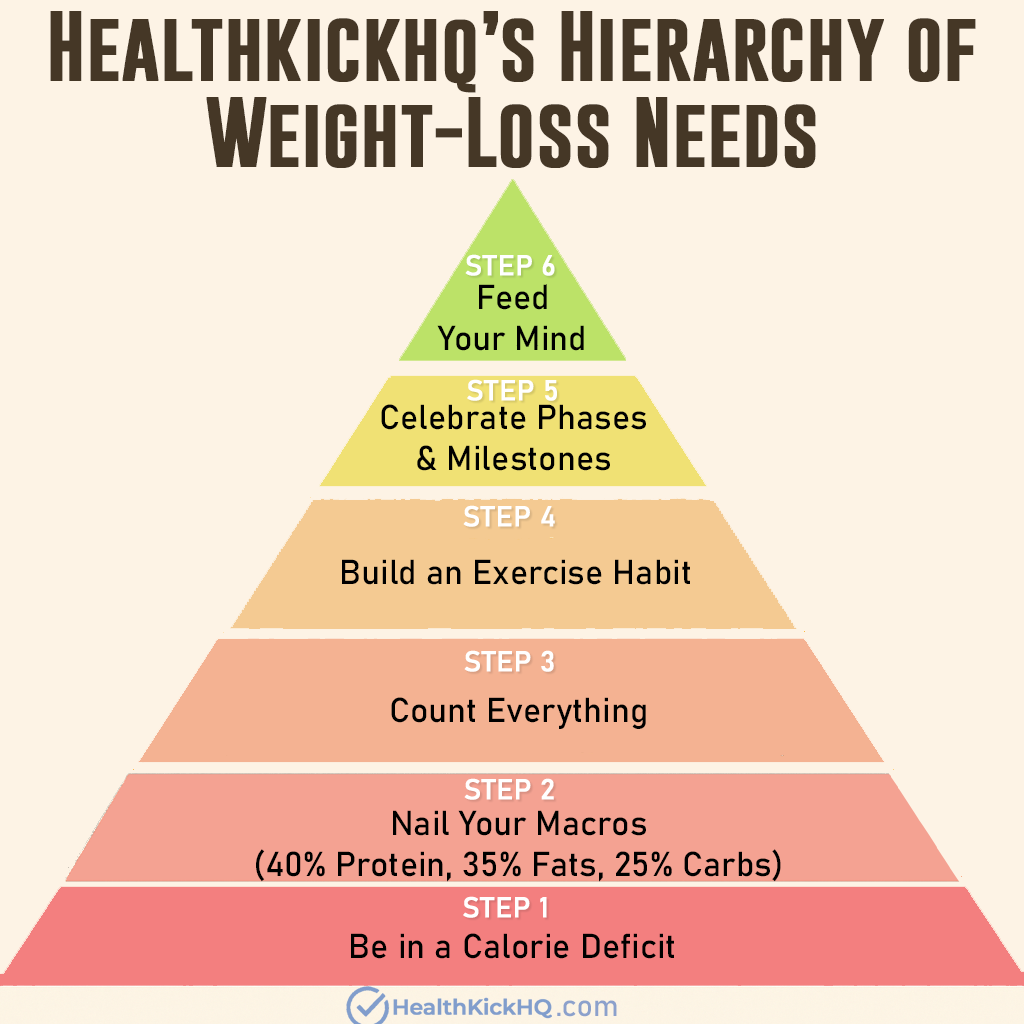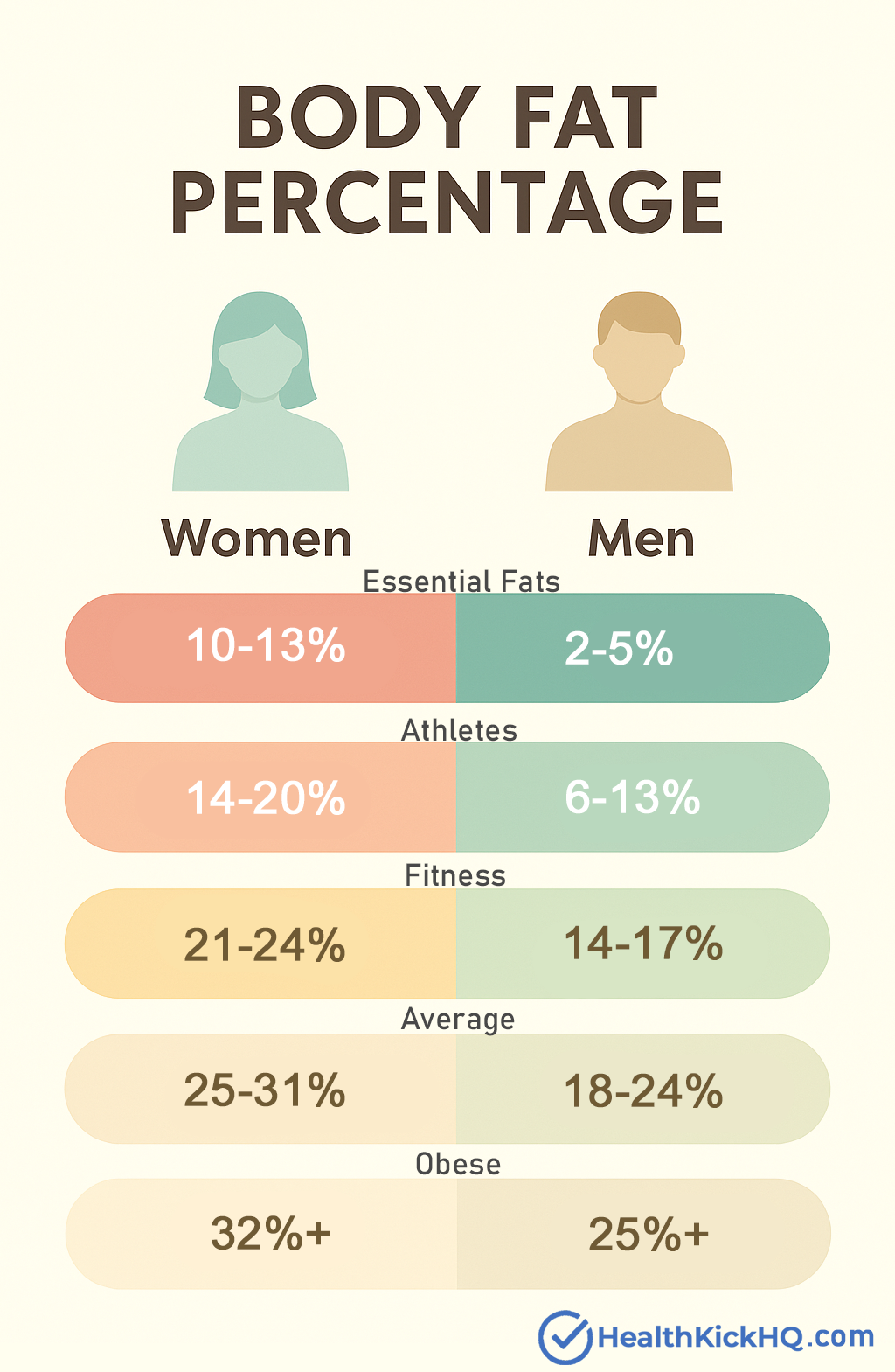STEP 5: Celebrate Phases and Milestones
WEIGHT-LOSS PATTERNS TO FOLLOW
By Chad | Updated 6/5/2025

Weight loss starts with clear goals and consistent tracking.
If you don’t take the time to imagine where you want to end your weight-loss journey, you’ll struggle to find the motivation to get there. Just think about it: How would you look and feel at your goal weight? What struggles do you have now that would be gone at your goal weight? Those things can help you motivate yourself to get there.
This lesson is about:
✅ Choosing a Goal Weight
✅ Understanding Weight-loss Pace and Phases
✅ Organizing Weight-loss Phases and Rewards
✅ How to Track Weight Loss
Step 1: Choose Your Goal Weight
What’s a Healthy Weight for You?
There’s no one-size-fits-all number for your goal weight. But the calculator below gives you two smart options to estimate a healthy goal weight — each with its own pros and cons.
Method 1: Body Fat Percentage
Arguably the best way to pick a goal weight. Why? Because it’s based on body composition, not just height or weight.
Here’s the idea:
💪 If you reach a certain body fat % — say average, fitness, or athlete level — then you’ve hit your goal, no matter what the scale says (see chart).
We’ll help you estimate what your weight would be at each of those body fat levels. Just plug in your current body fat %. If you have no way to get your current body fat %, that’s okay, we have another method.
But a quick heads up:
-
Body fat % is hard to measure precisely
(Dexa scan = best, Navy method = decent, home scales = hit or miss) -
There’s no way to perfectly know what your body fat % will be at different weights — your actual fat loss depends on nutrition, lifting, etc. Use the estimate from the calculator as a starting point to set your goal, not as Gospel truth.
Still, it’s a great way to choose a goal that reflects real progress.
Method 2 also has challenges.
Method 2: BMI

BMI (Body Mass Index) shows what weight is considered “healthy” for your height.
It’s simple, but…
❌ Doesn’t account for muscle
❌ Doesn’t factor in build or frame size
❌ Undershoots ideal weight for athletic or tall people
Example:
I’m 6’4”, 218 lbs, and 15% body fat — lean and strong.
BMI tells me I’m overweight until I drop below 200 lbs… which should be an “athlete” physique… not barely “normal” weight.
Rule of thumb:
If you’re:
-
-
Taller than 6’1”
-
Muscular, broad-framed, or athletic
👉 Add 10–20 lbs to your BMI-based goal weight
-
Bottom Line:
Use this tool to estimate your goal weight — then choose the number that feels right for you.
Write it down. Work toward it.
You can always adjust it later based on how you look, feel, and perform.
Ready? Try the Calculator Below
Here’s the calculator:
Goal Weight Estimator
📌 My goal weight is: ____ lbs
Step 2: Understanding Weight-Loss Pace and Phases
How Fast Should You Lose Weight?
You’ve probably heard that 1–2 pounds per week is a safe pace — and that’s a good general rule.
But the more accurate model is based on your body weight:
→ Safe, sustainable fat loss usually falls around 0.5–1% of your body weight per week.
That means:
✅ If you weigh more, you can safely lose 2+ pounds per week in the early stages.
✅ If you’re closer to your goal weight, it’s normal and healthy for the pace to slow — closer to 1–1.5 pounds per week.
Why The Pace Slows Over Time
In the early phases, your body burns more energy because you’re carrying more weight.
→ Heavier = faster loss.
As you get lighter:
☝️ Your calorie needs shrink because your body is smaller
☝️ You can’t (and shouldn’t) lose weight at the same weekly pace forever
☝️ Forcing a fast pace late in your cut risks losing muscle and burning out
Use This Calculator To Help With Estimates
Enter your current weight and your goal weight below. The calculator will spit out the approximate time it will take you and break it into phases for you.
Weight-Loss Timeline Calculator
Total to Lose: — lbs
Estimated Total Time: — months
The calculator does several things:
✅ Front-loads your timeline — you’ll likely lose faster at the start
✅ Gradually slows the pace across four phases
✅ Adjusts for your current size and goal weight
For most people, this model is very accurate. However, every body is unique — so feel free to adjust your phases if they don’t feel quite right for your situation.
Step 3: Organize Your Phases and Rewards
I like to break weight loss into 4 phases. The calculator above already gives you the four recommended phases, here’s how to use them.
→ At the end of each phase, give yourself a reward or milestone to celebrate progress.
Here are some examples of rewards:
-
- Run a 10K
- Run a marathon
- Buy a new outfit
- Take family photos
- Go on a trip
- Start dating again
- Go skydiving (many places have a ~250 lb limit)
- Buy new headphones, phone, or fitness gear
- Attend a concert
- Do a dream hike
The point is simple: attach something meaningful to each phase.
When you hit the phase, you give yourself the reward — this keeps momentum high.
Step 4: How to Track Weight Loss
Tracking is absolutely key — it builds motivation and keeps you focused. Two keys to this:
🔑Key 1: Weigh In Daily
Daily weigh-ins will fluctuate — due to water retention, sodium intake, hormone shifts, and more. That’s normal.
What matters is the trend — not individual peaks or valleys.
I recommend recording daily weight somewhere you can look back:
✅ A paper calendar (my personal favorite — simple and visible, just write the weight on that day)
✅ A whiteboard
✅ A spreadsheet
✅ An app
✅ A smart scale that keeps track of it for you
Just make sure you record it somewhere daily. Viewing and recording your daily weight keeps your weight-loss top-of-mind. It helps build momentum and gives you motivation (more on this in Step 6). I highly recommend daily weigh ins.
🔑Key 2: Track Weekly Averages
More important than daily weight is your weekly average.
Once you have each day recorded, calculate the average at the end of the week.
Example:
If your weekly average weight drops from 255 lbs to 253 lbs, you lost 2 lbs that week — no matter what the daily fluctuations showed.
Weekly averages tell the true story of fat loss — that’s the number to watch.
If it helps you, make a copy of this spreadsheet and record your daily numbers. It will automatically calculate your average weekly weight loss.
Final Thoughts
You’ve Got This
If you stick with this — set a goal, pace it realistically, track your progress — you WILL lose weight.
As you start to hit your calorie, macro, and exercise goals consistently, the momentum builds — and yes, it starts to be fun. I promise. 🎯
Only three lessons left! Lesson 5 is all about tracking. It feels complicated to try to track calories, macros, weight, and everything else. I’ll walk you through it.
👉See lesson 5 for more details.
📌 Notes to Keep From This Lesson 📌
- My goal weight _____________
- Phase 1 weight _____________
- Phase 1 date _____________
- Phase 1 reward _____________
- Phase 2 weight _____________
- Phase 2 date _____________
- Phase 2 reward _____________
- Phase 3 weight _____________
- Phase 3 date _____________
- Phase 3 reward _____________
- Phase 4 weight _____________
- Phase 4 date _____________
- Phase 4 reward _____________


